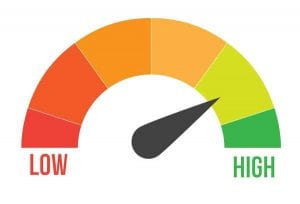By Adria Nassim
A lot of times, when I hear someone describe a person’s level of disability, they might say something like: “My son or daughter is high functioning,” or “I work with students who are pretty low functioning.” While people do use these terms, I don’t especially like them for several reasons.
‘High’ and ‘low’ just doesn’t paint the picture
Functioning labels do not truly allow for an accurate and holistic picture of life with a disability. Saying someone is high functioning simply means they function well in certain areas of life or in specific situations. Terminology like this will not help the person hearing it understand the areas in which an individual may still have challenges and warrant support. Furthermore, I have found that the public often equates “high functioning” disability with verbal ability and average to above average intelligence, as well as the capability of living at least semi-independently.
While many people with disabilities who have less intensive support needs do fit these criteria, the level of support they may have needed to help them get to this point in their lives is often very involved. Also, just because a person’s intellect is average to above average doesn’t mean they don’t struggle in other areas.

The idea of referring to someone as “low functioning” is also not very appealing. It sends a negative message that these individuals are capable of very little, and that society should hold them to low standards, which I don’t believe is the case at all. I think with the proper supports in place, people with severe levels of disability and higher support needs can help direct their own lives, set goals, and work toward them, just like anyone would; I also think they should have the appropriate supports in place that allow them to do those things.
There is somewhat of a problem with the terminology “high functioning.” For people who may be unfamiliar with or not have any connection to developmental disability, explaining to them that certain individuals may warrant support or why they may need services for a disability can be very difficult at times, particularly when the individual has age-appropriate verbal skills and intellect or when the individual’s diagnosis is invisible.
I think many people have a preconceived notion of certain disabilities. Those notions may result from a single movie or something in popular culture they’ve seen (e.g., “Rain Man) or one person they once met. Once an individual falls outside of those specific characteristics, people no longer know what to think, how to react, or even what to do with those of us who don’t fit.
 So-called “neurotypical” people don’t refer to themselves as high functioning or low functioning. They may describe themselves as capable of giving a presentation, for example, but completely incapable of keeping an apartment organized.
So-called “neurotypical” people don’t refer to themselves as high functioning or low functioning. They may describe themselves as capable of giving a presentation, for example, but completely incapable of keeping an apartment organized.
This is true of people with autism spectrum disorder and other disabilities as well. The spectrum is not a linear or straight line. It is a full array of abilities, perceptions, behaviors, and symptoms that can be present in different degrees at different times. Moreover, we’re all individual people with our own lives and circumstances.
Better visual representations of the autism spectrum
Some writers and people with disabilities have created new, more helpful ways to depict an individual’s functioning level.
- In her post, “Understanding the Spectrum—A Comic Strip Explanation,” Rebecca Burgess illustrates what the autism spectrum can involve for different people.
- Like the Burgess’ illustration, writer Nera Burch, in her post, “This Graphic Shows What the Autism Spectrum Really Looks Like,” also uses points on a circular color spectrum to explain the diversity of the autism spectrum. Burch, however, uses different descriptors. Take a look at how she compares her functioning level with that of her brother.
Life with a disability is different for every individual and every family. One of the current problems our society has involving the use of functioning labels stems from the simple fact that there is not an easy way to describe someone’s level of independence and need for support other than to use the term “high or low functioning.” I think the teaching and instruction surrounding disability and needs for support should be quite a bit broader than simply looking at an individual’s level of independence or functionality in a given area. Many times, an individual is able to do well in specific areas but greatly struggles in others. The individual’s strengths can sometimes compensate for, or even mask specific challenges, ones which the public may rarely or even never see or know exist.
Disability is not a thermometer or gas tank. It’s an extremely individualized experience.